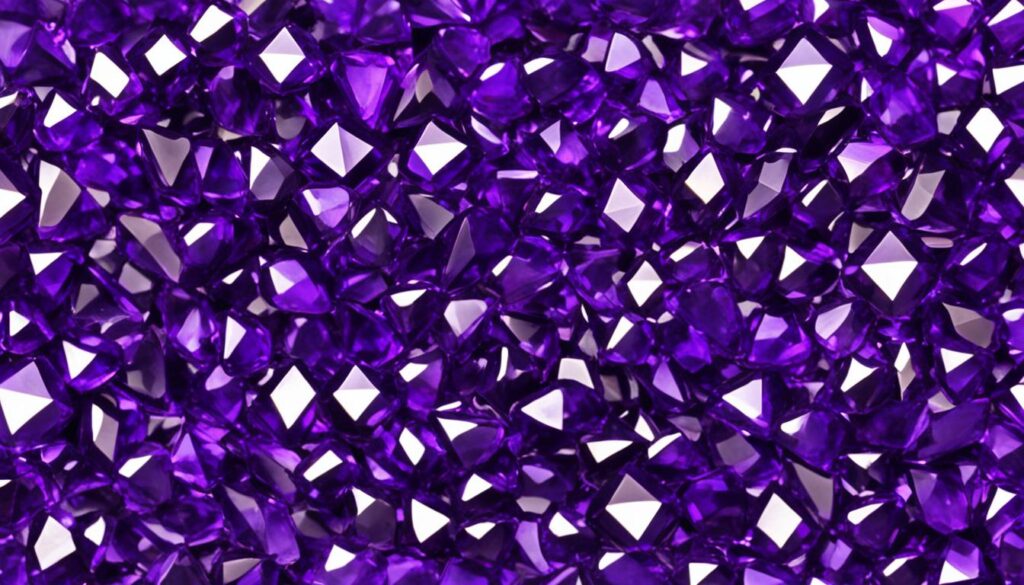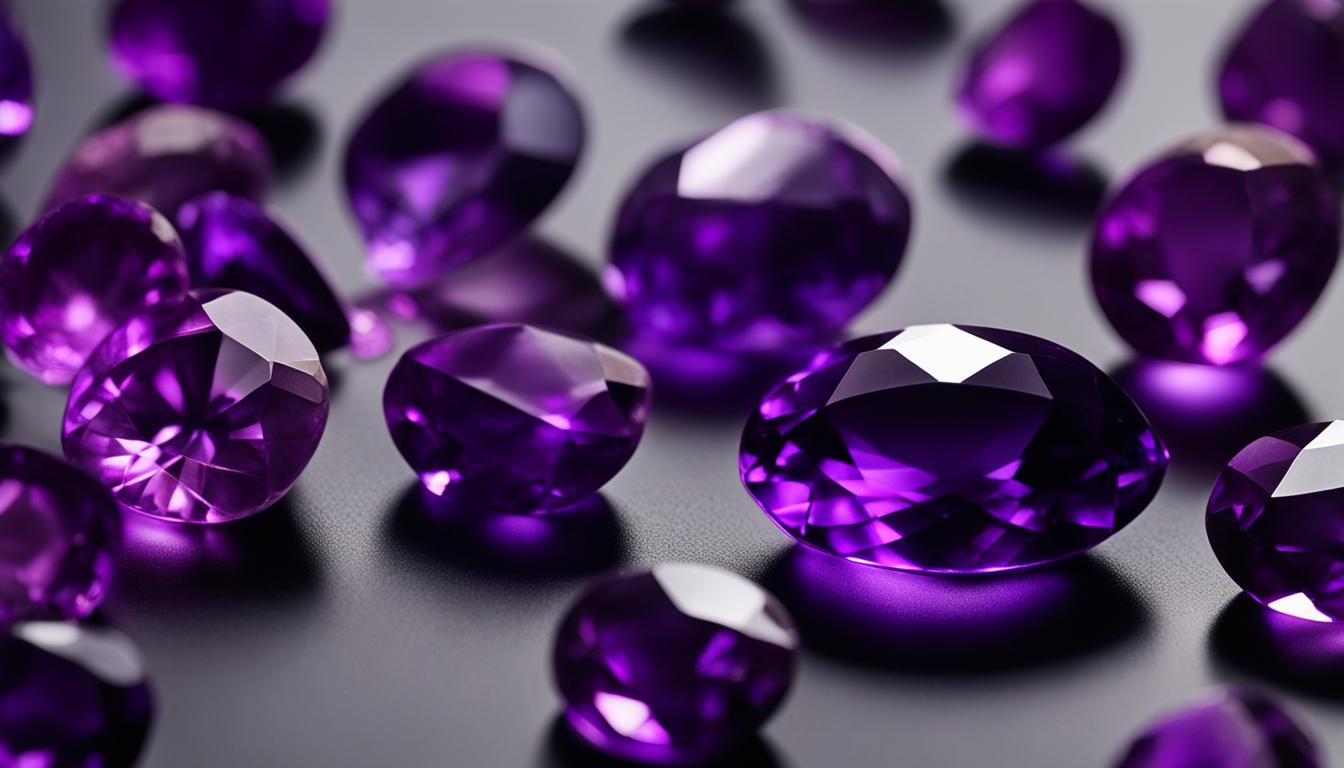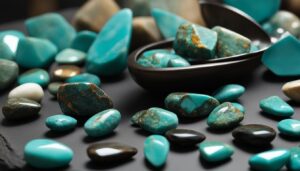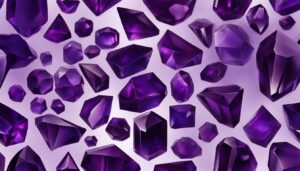Amethyst, with its captivating purple hue, is a popular gemstone known for its beauty and allure. However, you may be wondering, can amethyst lose its color? The answer is yes. Various factors can impact the color of amethyst, resulting in a change or even a fade in its vibrant purple shade.
Heat treatments, exposure to sunlight (UV), and water containing certain minerals are the main culprits behind color loss in amethyst. Heat treatments can alter the color of amethyst, causing it to turn into shades ranging from yellow to orange, brown, white, or even pale green. Sunlight and UV rays can also take a toll on amethyst, gradually causing it to lose its color over time. Minerals found in tap water can affect the color of amethyst as well, particularly if residue is left behind after the water evaporates.
Key Takeaways:
- Amethyst can change color or fade due to heat treatments, exposure to sunlight (UV), and certain minerals in water.
- Heat treatments can alter the color of amethyst, resulting in shades such as yellow, orange, brown, white, or pale green.
- Exposure to sunlight and UV rays can cause amethyst to lose its color over time.
- Minerals in tap water, if left behind after evaporation, can change the color of amethyst.
- To preserve the color of amethyst, avoid heat treatments, limit exposure to sunlight, and use distilled water for cleaning.
How Heat Treatments Affect Amethyst Color
Amethyst, a popular gemstone known for its captivating purple color, can undergo color changes due to various factors. One of the significant contributors to these changes is heat treatments. Let’s delve into how heat treatments affect the color of amethyst.
Heat treatments involve subjecting the amethyst to elevated temperatures, which modify the oxidation state of the iron impurities present within the crystal. The intensity of the temperature and duration of exposure play a crucial role in determining the extent of color transformation.
When amethyst is heated, it can exhibit a range of colors, including yellow, orange, brown, white, and even pale green. The specific color outcome depends on the temperature applied during the treatment.
Heat-treated amethyst, however, faces some scrutiny within the jewelry community. Since the treatment permanently alters the stone’s original color, it may not be universally accepted. Moreover, the resulting color can resemble citrine, leading to confusion between the two gemstones.
The Effects of Temperature on Amethyst Color
The following table showcases the color range that amethyst can exhibit when subjected to different temperatures:
| Temperature Range (°C) | Color Outcome |
|---|---|
| 200-300 | Pale yellow |
| 400-800 | Yellow or orange-brown |
| 900-1300 | Pale green or yellowish-white |
Heat-treated amethyst can showcase various colors, but it is essential to remember that these colors are not natural and result from the treatment process.
While some individuals may appreciate the unique colors produced by heat treatments, others prefer amethyst in its natural vibrant purple hue. When purchasing amethyst jewelry, it is essential to inquire about the treatment history to ensure you are getting the color and quality that align with your preferences.
Understanding the impact of heat treatments on amethyst color allows us to appreciate the diverse range of colors this gemstone can exhibit. Whether you prefer the vibrant purple of natural amethyst or the unique colors resulting from heat treatments, amethyst continues to captivate with its beauty and allure.
The Impact of Sunlight on Amethyst Color
Sunlight and UV rays can have a detrimental effect on the color of amethyst over time. The wavelength of light that gives amethyst its natural and vibrant purple color can be altered by various factors, including color centers within the crystal structure.
Exposure to UV radiation, specifically, can trigger electron swapping between the iron and oxygen elements present in the amethyst crystal. This phenomenon can result in a noticeable change in the color of the stone, leading to amethyst color fading or loss.
To prevent the gradual color loss of your amethyst, it’s important to take certain precautions:
- Store your amethyst away from direct sunlight to minimize its exposure to UV rays.
- Limit the use of UV light sources, such as tanning beds or strong fluorescent lighting, around your amethyst jewelry or decor.
- Avoid using UV cleaning devices or exposing amethyst to harsh chemicals that may further impact its color.
It’s worth noting that LED lights can also affect amethyst, so it’s essential to consider the lighting options and display cases you choose for showcasing your precious amethyst pieces.

By implementing these preventative measures, you can maintain the beautiful purple hues of your amethyst and ensure its long-lasting color and vibrancy.
How Water Minerals Affect Amethyst Color
Preserving the beautiful amethyst color requires understanding the impact of water minerals. When tap water evaporates, it can leave minerals behind that build up inside the amethyst’s cracks, leading to a loss of color and a dull appearance in certain areas of the stone.
To prevent these color changes and maintain the vibrancy of your amethyst, it is recommended to use distilled water when cleaning the gemstone. After gently cleaning, ensure you dry it thoroughly with a soft cloth to avoid water deposits.
In addition to minerals, other substances found in water, such as salts, chemical compounds, and oils, can also affect the color of amethyst. Therefore, it’s crucial to handle your amethyst with care and keep it away from substances that could potentially damage its stunning hue.
FAQ
Can amethyst lose its color?
Yes, amethyst can lose its color due to heat treatments, exposure to sunlight, and minerals in water.
How do heat treatments affect amethyst color?
Heat treatments can alter the color of amethyst, turning it from purple to yellow, orange, brown, white, or even pale green. Higher temperatures and longer exposure result in more dramatic color shifts.
What is the impact of sunlight on amethyst color?
Sunlight and UV rays can cause amethyst to lose its color over time. Exposure to UV radiation can lead to color changes in the crystal. To prevent color loss, store amethyst away from direct sunlight and limit exposure to UV light sources.
How do water minerals affect amethyst color?
Minerals in tap water can change the color of amethyst if they are left behind when the water evaporates. Using distilled water to clean amethyst and gently drying it with a cloth can help prevent color changes caused by water minerals.




